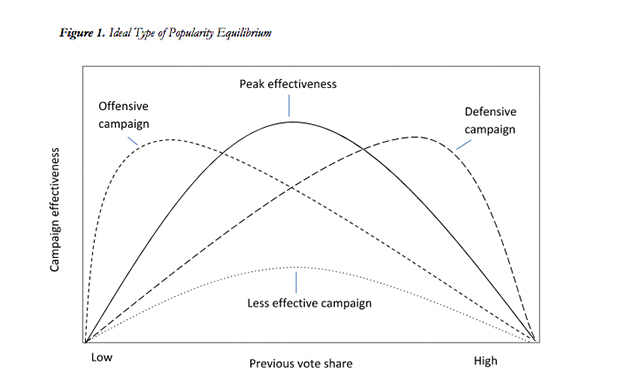Just like the porridge in Goldilocks and the Three Bears, election campaigns go down best when the local electorate is neither too cold nor too hot, but just right.
That’s the finding from the latest in a series of studies to nail down exactly how, when and where politicians and parties can get the best election results from campaigning locally.
In the paper published by Party Politics, experts at Brunel University London, The University of Manchester and University of Birmingham test their theory across six British elections.
Their theory of ‘Popularity Equilibrium’ explains the relationship between underlying constituency-level support and campaign effectiveness.
“The essential point is that campaigns deliver electoral payoffs,” said Brunel’s Professor Justin Fisher. “But they deliver fewer payoffs when you’re too popular as well as when you’re unpopular.
“These findings have crucial implications for constituency-level campaign effects and can help parties and candidates work out where best to focus their campaign activities.”
The harder parties and candidates campaign at constituency level, the better they perform electorally. Not only that, campaigning also boosts turnout. But a fairy-tale finish at the polls hinges on more than the strength of the campaign. It’s also about who is up against who, whether the efforts are effectively targeted and critically, the party’s underlying local popularity.
To test the Popularity Equilibrium theory, the team studied how much effort parties and candidates put into local campaigning across more than 6,000 electoral contexts over six different general elections, between 1992 and 2015. They combed through details such as the number of campaign workers, level of doorstep canvassing and the amount of leafleting, to calculate how underlying popularity effects the campaigns’ impact. That way, they calculate the optimum level for effort and gain.

The Conservatives, they found, ran the least effective campaigns, and the Liberal Democrats the most effective. And parties fared best when they reacted to their underlying level of popularity – doing better whether they were neither too unpopular nor too popular. The sweet spot for electoral payoff is where underlying popularity is about 23%. As this figure rises, it gets more and more difficult to gain more votes.
And though the theory is tested in the British first-past-the-post system, researchers say the same rule, showing the curvilinear relationship between support and campaign effectiveness, is likely to work in proportional electoral systems.
“We’ve known for some years that constituency campaign efforts deliver electoral benefits. But we now know when they deliver most – something that will both fascinate observers, but also benefit parties and candidates and help them in their campaign planning and decision-making.” said Prof Fisher.
Reported by:
Hayley Jarvis,
Media Relations
+44 (0)1895 268176
hayley.jarvis@brunel.ac.uc